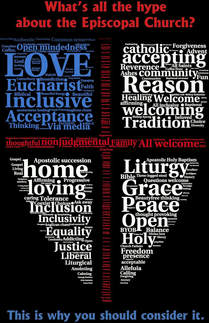A loving caring community serving all
Vestry
History
In England the annual election of churchwardens took place in Easter week. The parishioners gathered at the church to hear the outgoing wardens render their accounts and elect their successors. The parishioners assembled in the vestry, the room off the chancel where the clergy vested. The assembled parishioners came to be known as the vestry. These were open vestries in that all adult male parishioners could participate. It was like a modern annual congregational meeting. In Virginia the parishes were very large and it was difficult to get all the male parishioners together. So they would meet only once and elect twelve of their members to serve for life. This was known as a closed vestry. The transition to a closed vestry was completed by 1633 or 1634, when a Vestry Act was passed. It provided that "there be a vestrie held in each parish." The current vestry evolved from this colonial pattern.
The vestry is the legal representative of the parish with regard to all matters pertaining to its corporate property. The number of vestry members and the term of office varies from parish to parish. Vestry members are usually elected at the annual parish meeting. The presiding officer of the vestry is the rector. There are usually two wardens. The senior warden leads the parish between rectors and is a support person for the rector. The junior warden often has responsibility for church property and buildings. A treasurer and a secretary or clerk may be chosen. These officers may or may not be vestry members. The basic responsibilities of the vestry are to help define and articulate the mission of the congregation; to support the church's mission by word and deed, to select the rector, to ensure effective organization and planning, and to manage resources and finances.
https://www.episcopalchurch.org/library/glossary/vestry

